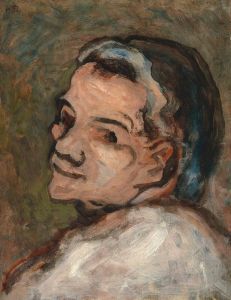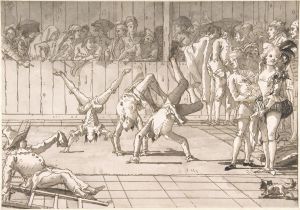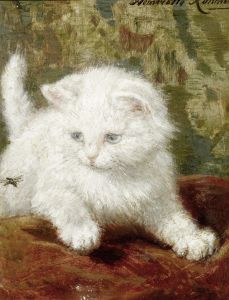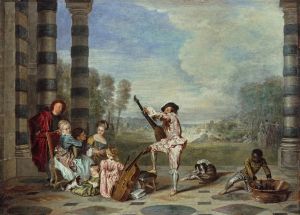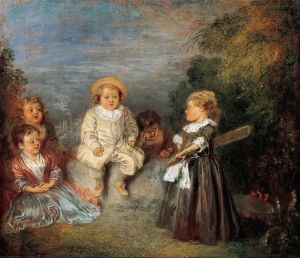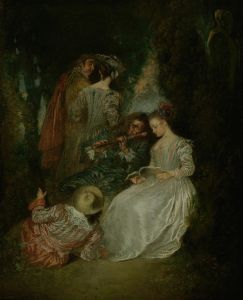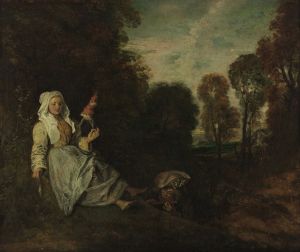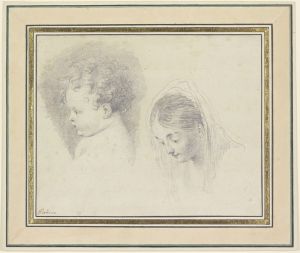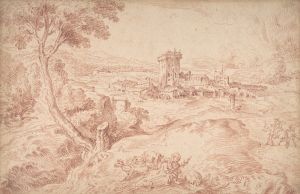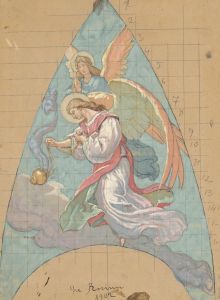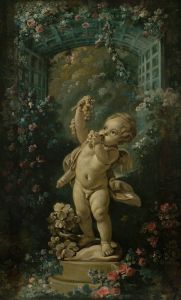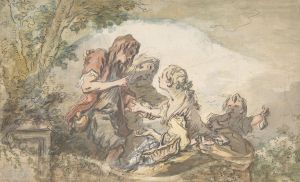
Standing Girl; barefoot, lifting her skirt
A hand-painted replica of Jean-Antoine Watteau’s masterpiece Standing Girl; barefoot, lifting her skirt, meticulously crafted by professional artists to capture the true essence of the original. Each piece is created with museum-quality canvas and rare mineral pigments, carefully painted by experienced artists with delicate brushstrokes and rich, layered colors to perfectly recreate the texture of the original artwork. Unlike machine-printed reproductions, this hand-painted version brings the painting to life, infused with the artist’s emotions and skill in every stroke. Whether for personal collection or home decoration, it instantly elevates the artistic atmosphere of any space.
Jean-Antoine Watteau was a prominent French painter whose work is often associated with the Rococo style, characterized by its lightness, elegance, and exuberant use of color. One of his lesser-known works is "Standing Girl; barefoot, lifting her skirt," a drawing that exemplifies his skill in capturing the subtleties of human form and expression.
Watteau was born in 1684 in Valenciennes, a city that had recently become part of France. He moved to Paris in his early twenties, where he began to develop his unique style. Watteau's work often depicted scenes of aristocratic leisure and theatrical subjects, reflecting the social and cultural milieu of early 18th-century France. His art is celebrated for its delicate brushwork and the ability to convey the grace and elegance of his subjects.
"Standing Girl; barefoot, lifting her skirt" is a drawing that showcases Watteau's mastery of the human figure. The drawing is executed with a keen attention to detail, capturing the natural posture and subtle movements of the young woman. The subject is depicted standing, barefoot, and lifting her skirt slightly, a pose that suggests a moment of candidness and spontaneity. This work is a fine example of Watteau's ability to infuse his subjects with a sense of life and immediacy, qualities that have made his work enduringly popular.
Watteau's drawings are often praised for their fluidity and the way they capture the essence of the moment. In "Standing Girl; barefoot, lifting her skirt," the artist uses a combination of chalk and ink to create a soft, textured effect that enhances the naturalism of the figure. The drawing is part of a larger body of work that includes studies of figures, costumes, and theatrical scenes, reflecting Watteau's interest in the world of performance and the human form.
The drawing is believed to have been created during Watteau's mature period, a time when he was producing some of his most acclaimed works. Although primarily known for his paintings, Watteau's drawings are an essential part of his oeuvre, offering insights into his creative process and the development of his ideas. They reveal his meticulous approach to composition and his ability to convey emotion and movement with economy and grace.
Watteau's influence on the art world was significant, and his work paved the way for later Rococo artists. His ability to capture the fleeting moments of life with elegance and sensitivity has been admired by generations of artists and art lovers. "Standing Girl; barefoot, lifting her skirt" is a testament to Watteau's skill as a draftsman and his keen observation of the human condition.
Today, Watteau's works, including his drawings, are held in high esteem and can be found in major art collections around the world. They continue to be studied and appreciated for their technical brilliance and their contribution to the development of 18th-century French art. "Standing Girl; barefoot, lifting her skirt" remains a fine example of Watteau's artistic legacy, capturing the charm and grace that define his work.





